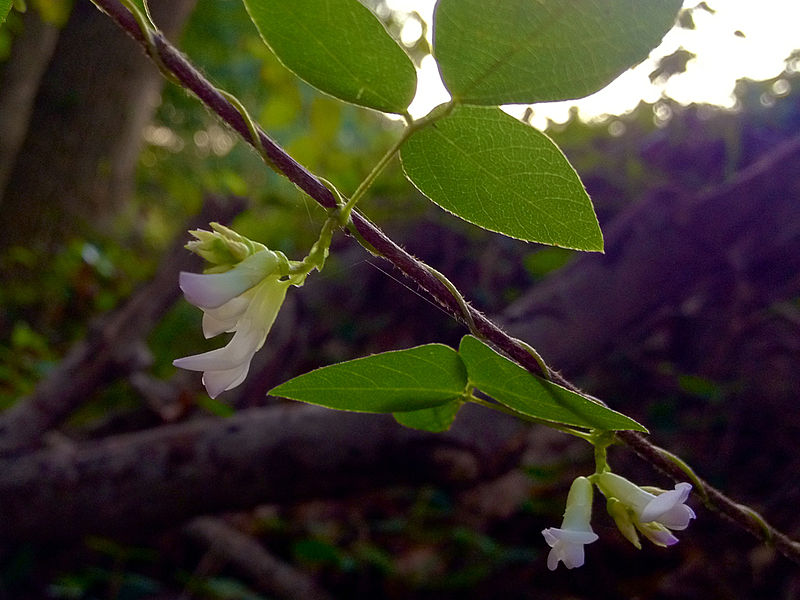
Native to moist shady areas of eastern North America from New Brunswick to Florida, west to Texas north to North Dakota and Montana, this herbaceous, annual twining vine is a member of the pea family, Fabaceae, that also includes lupine, mimosa, and black locust. The vines grow up to 8′ long from a slender tap root and have slender, hairy, branched stems bearing leaves with three oval leaflets 2.5-4″ long. The flowers are of two distinct types. The upper flowers are produced in 2″ long clusters of 2-15 in the leaf axils from late summer to fall. Each pea-like flower is 1/2″ long, has 5 petals that are white, pale pink, lilac or pale purple, and gives rise to a flat, spotted pod that is pointed at each end and contains 3-4 seeds. A second kind of flower is produced at ground level. It lacks petals, self fertilizes, and produces a single-seeded fleshy 1/2″ wide pod that lies just beneath the ground (like a peanut) and is edible. The leaves of hog peanut provide food for the larvae of two kinds of skippers, and the seeds provide food for various birds, mice, and voles. The genus name, Amphicarpaea, comes from the Greek words, amphi meaning of both kinds, and carpos meaning fruit and refers to the two kinds of pods produced by the plant. The specific epithet, bracteata, is the Latinized word meaning having bracts.
Type: Herbaceous twining annual vine
Bloom: Pea-like flowers with 5 white, pale pink, lilac or pale purple petals from late summer into fall
Size: 2-8′ long
Light: Full sun to light shade
Soil: Average, medium moist, well-drained; roots fix nitrogen
Hardiness: Zones 4-9
Care: Contain if too vigorous
Pests and Diseases: Aphids, leaf miners
Propagation: Seed
Companion Plants: Ferns, hosta, Lobelia cardinalis
Outstanding Selections: None available
Photo Credit: Fritzflohrreynolds Wikimedia Commons